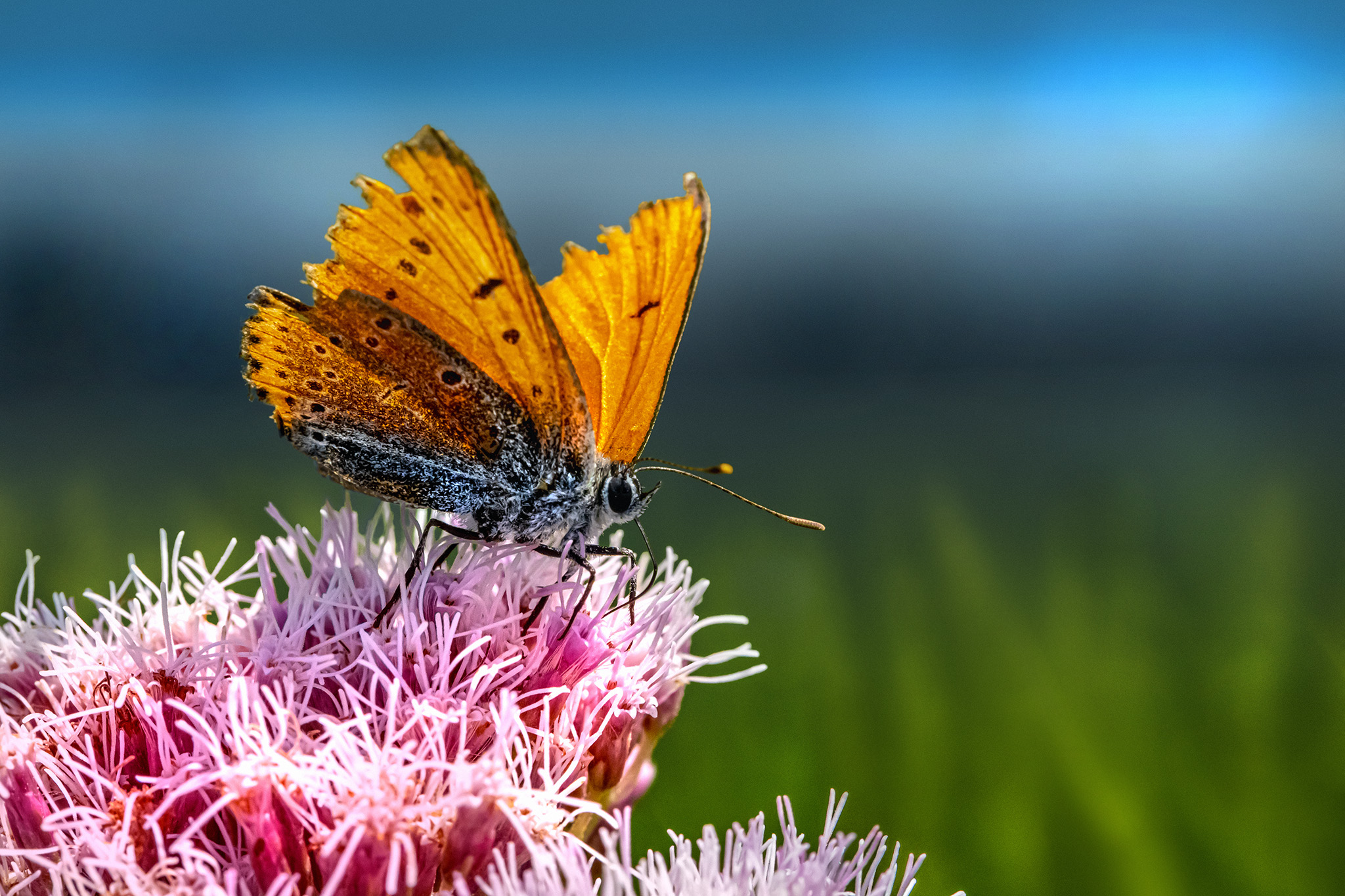The Large Copper (Lycaena dispar) is a striking butterfly species belonging to the Lycaenidae family. Despite its name, it is not particularly large compared to other butterflies, but its vibrant colors and distinctive markings make it a standout in any natural habitat where it occurs.
Here are some key features and characteristics of the Large Copper butterfly:
- Appearance: The Large Copper butterfly exhibits a vivid combination of colors, with bright copper-orange wings marked by bold black spots and lines. The upper side of the wings of the male features a bright coppery-orange coloration with black markings, while the female’s wings are typically a paler orange with similar markings.
- Wingspan: The wingspan of the Large Copper butterfly ranges from approximately 28 to 34 millimeters, making it a relatively small to medium-sized butterfly.
- Habitat: The Large Copper butterfly is typically found in wetland habitats, including marshes, bogs, fens, and damp meadows. It requires areas with an abundance of its larval host plants, which are primarily species of sorrel (Rumex spp.), upon which the caterpillars feed.
- Life Cycle: Like other butterflies, the Large Copper undergoes a complete metamorphosis, consisting of four stages: egg, larva (caterpillar), pupa (chrysalis), and adult. The female butterfly lays her eggs on the leaves of sorrel plants, and the caterpillars hatch and feed on the foliage before pupating and emerging as adult butterflies.
- Distribution: The Large Copper butterfly is distributed across parts of Europe and Asia, including countries such as the United Kingdom, France, Germany, the Netherlands, and Russia. However, its range has become more fragmented due to habitat loss and degradation.
- Conservation Status: The Large Copper butterfly is considered to be at risk of extinction in many parts of its range due to habitat loss, drainage of wetlands, agricultural intensification, and other human-induced factors. Conservation efforts focused on habitat restoration, protection of breeding sites, and management of wetland habitats are essential for the survival of this species.
Overall, the Large Copper butterfly is a beautiful and charismatic insect species that serves as an important indicator of the health of wetland ecosystems. Its striking appearance and ecological significance make it a valuable species worthy of conservation efforts to ensure its continued survival in the wild.
Subscribe to the newsletter:
